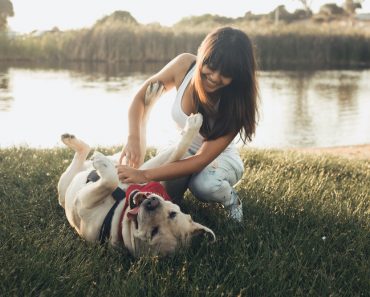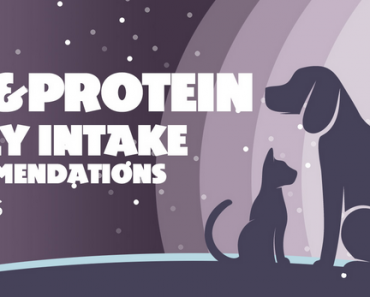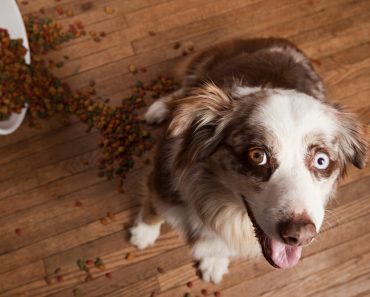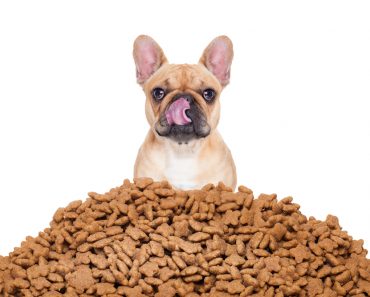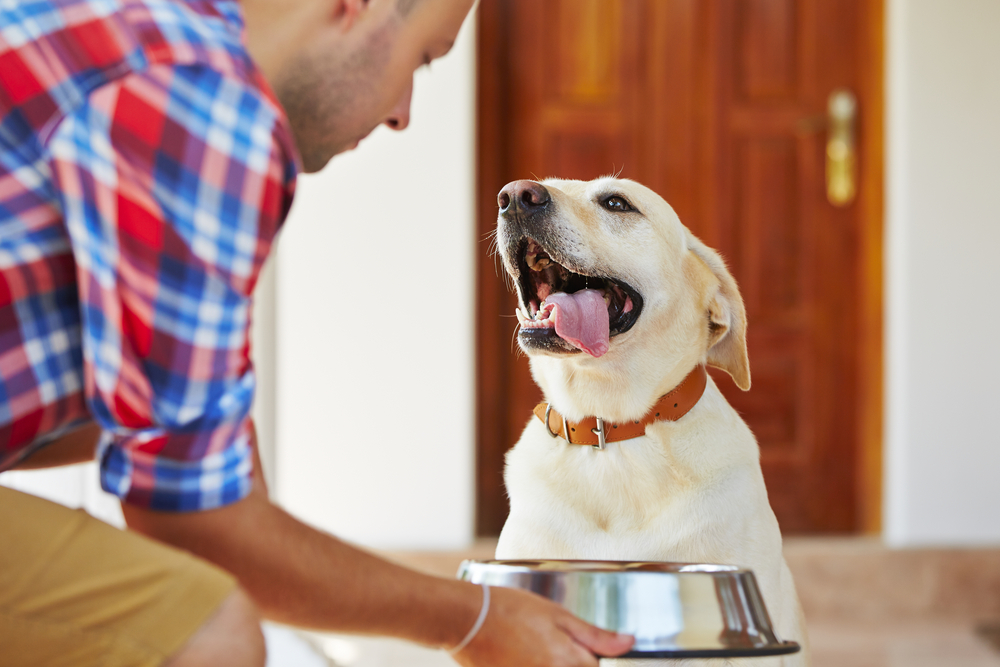 Questions like which dog food is the best, how often it should be fed and in which amounts are very common among dog owners, and rightly so. Information on different brands often does not correspond to the dog’s needs, which are very individual.
Questions like which dog food is the best, how often it should be fed and in which amounts are very common among dog owners, and rightly so. Information on different brands often does not correspond to the dog’s needs, which are very individual.
Not without reason mostly canned food is often favored by dogs as well as their owners. Canned food is available in countless flavors and by many different brands, and it tastes especially well, so that even picky dogs cannot resist. But as always – too much food is not healthy. So it is important to vary the amount of food case by case so that you can provide it with all important vitamins, minerals and other nutrients. In this article we will tell you about different kinds of canned foods, its advantages and contents as well as their best rationing.
Contents
Advantages of canned dog food
Canned dog food has many clear advantages and that have a remarkable impact on health as well as taste.
Canned food consists of water in a large amount. To be exact, the average water content is about 70%. This is mainly an advantage for dogs that do not drink a lot. Feeding them canned food is a great method to meet their daily water requirements, especially for smaller and medium sized breeds.
Because of its softer texture, lots of dogs prefer canned over dry food. Again this is mostly the case for smaller breeds, since they have a completely different anatomy of their jaws, so canned food is easier to eat for them.
In contrast to dry food, canned food is richer in energy, so dogs eating it can more easily hold their weight. This is because they can eat more of it while ingesting the same amount of energy as with dry food.
Furthermore, canned food has a high content of animal proteins. These are extremely important to your dog’s health. You should be aware that different brands have different amounts of them. For this reason you should always look at the contents of the respective brand and choose the one that has a high amount of meat.
Advantages of canned food at a glance
- rich in animal protein
- dogs will suffer from obesity less
- intense taste
- high amounts of water, avg. 70%
- meets a large part of daily water requirements
- many brands to choose from
- high amounts of meat
- long shelf life (closed cans)
- easy to ration
Rationing of canned food
You as an owner have a high responsibility for your dog. Not only in regards to the food’s quality, which should of course be high, but in regards to rationing as well. Rationing depends on many different factors and is completely individual for your dog. Normally, the average amount is written on the respective can. This can be seen as a starting point, however it should always be individually varied, so these amounts are only approximate values.
Rule of thumb: Weight divided by 30 is the daily ration of canned food
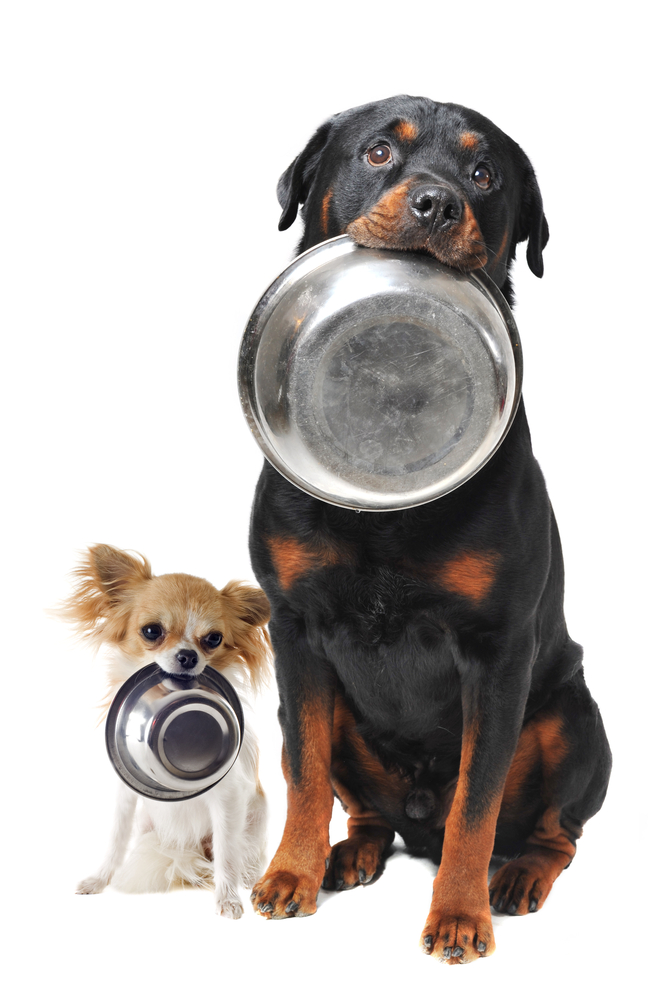
It is important to vary the ration by the dog’s nutrient and energy requirements. Of course, these have to be determined first, since they depend on multiple individual factors.
Age:
Your dog’s age is an especially important factor in determining its ideal daily amount of food. A young puppy has completely different energy requirements than an adult or senior dog, since it has to be supported in its development and growth by its food. Growth is, of course, completed for adult dogs, so they only have to eat enough to keep their weight and meet their energy and nutrient requirements. As soon as your dog hits senior age, the amount of food has to be lowered again because of its slower metabolism. The type of food is also dependent on the dog’s age, since puppies need other food contents than seniors, which leads to specialized canned foods for puppies or seniors.
Your dog’s level of activity:
Just as humans, dogs feel tired and hungry after a long walk and need to even out their energy balance. This means that active dogs need higher amounts of food than dogs that enjoy their days by lying around in their basket or in the garden. Less active dogs need less food, so overweight can be avoided from the very start. However this only means the respective dog needs a LITTLE more food, not a high amount. As always, the ration and contents of the food have to be chosen in regards to the dog’s activity level.
Weight and height:
Weight and height of your dog also play an important role in determining the daily rationing of its food, and should be well regarded. Firstly, you should determine whether your dog has a normal weight, or whether it is over- or underweight. This is easy to determine. You only have to look at its ribs. As soon as you can clearly feel its ribs, it is underweight. Also if the ribs are clearly visible just by looking. As long as the ribs are not easily felt and you need a fair amount of time to clearly feel them, your dog’s weight is too high. Ideally, there is only a small layer above the ribs. As soon as your dog weighs too much, the daily amount of food should be lowered, while it should be raised when it is slightly underweight. In both cases it is important not to vary the amount too drastically, but rather let the dog get used to the new ration.
Dog food:
The food itself is also crucial, of course. The higher the food’s quality is, the less dogs need of it to meet their own needs. If a dog gets a lot of unneeded contents, it will normally need more of it, leading to overweight. For this reason it is important for you to look out for the contents.
| Dog | Canned food ration |
|---|---|
| 2. – 6. month | About 3% of the dog’s body weight |
| Older than 6 months | 2 – 3% of the dog’s body weight |
| Senior age (dependent on the breed starting from 7 years) | 2 Percent of the dog’s body weight |
Conclusion
When rationing canned food, everything is dependent on your own dog. The amounts given by the respective brands can be seen as an approximate value, however they should be individually varied so all your dog’s needs can be met. If you do not know what to do exactly, you should ask your veterinarian, also if your dog suffers from over- or underweight.
Fotocredit:
© Jaromir Chalabala – shutterstock.com
© cynoclub – shutterstock.com


